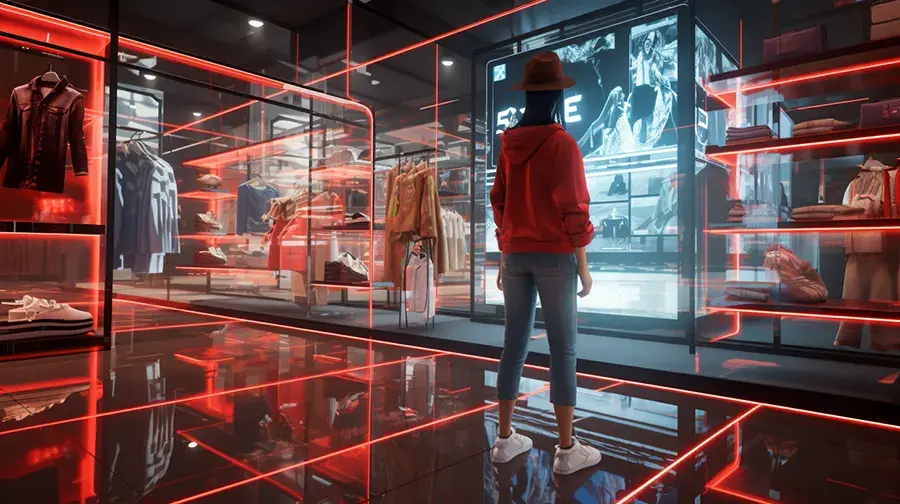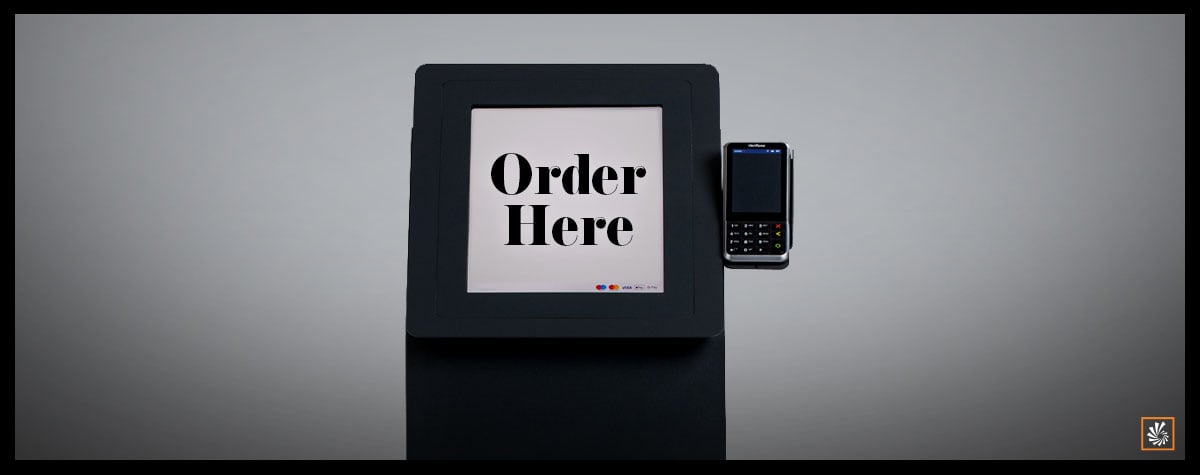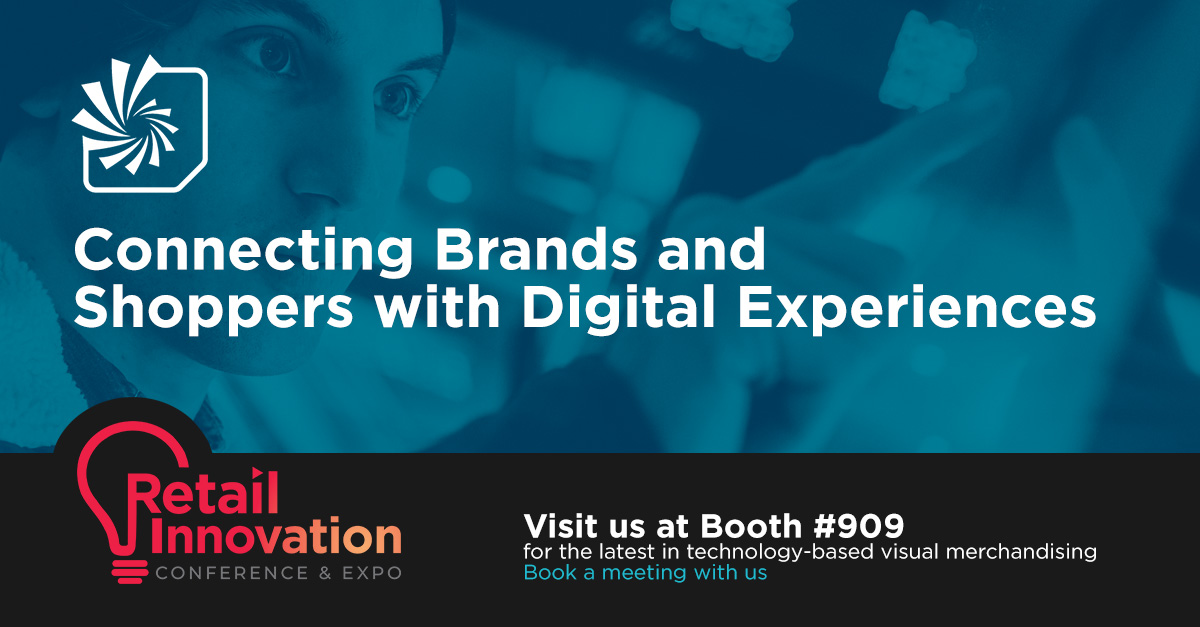Lessons from Fifth Avenue Retailers on the Realities of Digital Integration
Creative Realities’ SVP of Marketing - Beth Warren - recently facilitated a panel of brand and retail, digital, and experiential design leaders to discuss key issues and institutional realities shaping the practices of digital. The expert panel was created for AV Reacts, a podcast program by AVIXA, and included Melissa Gonzales, principal and shareholder at MG2, a global strategy, design, and architecture firm; David Title, a partner at Bravo Media; and David Polinchock, the founder of the Unified Brand Experience Lab.
Use of digital platforms has accelerated in the wake of the pandemic. From contactless interaction to virtual try-on experiences, they’re changing the way we interact with retail when we’re home and when we’re in the store. Now, two years out from the pandemic, we’re continuing to experience a retail technology renaissance that goes beyond removing friction from transactional experiences and now includes curating creative and memorable customer experiences that deliver a “wow” factor.
What follows is a summary of the conversation. A full replay of the webinar is available at the end of this post.
New York City retailers are using digital signage to transform and elevate the customer experience.
- Coach – Leveraging digital experience to reinvent the Brand for relevance
Coach is standing out with Coachtopia, their newer initiative. In the past, Coach was considered a bag for mature shoppers — but now, Coach is finding relevance with a younger audience. With Coachtopia, they’re creating immersive experiences that speak to the younger generation. A recent collaboration at one of their popups in New York was with ZERO10. They created an augmented reality mirror. People were able to go in and reimagine themselves with different Coach handbags and accessories by interacting with the mirror. This unique manner of pushing the envelope has caused Coachtopia to go viral, with international reverberations. They stand out as a good example of prioritizing a long-term, more holistic play on the so-called halo effect.
“They’re dedicated to getting on peoples’ ‘important list’ mentally, even if it doesn’t mean an immediate sale,” said Melissa Gonzales. “I think it's exciting to see that as more technology is integrated, it's giving data points to be able to track attribution, allowing brands to do a lot more creative things in the physical world, and that’s what is going to create lasting impressions in a broader audience.” - Tiffany & Co – using digital elements organically integrated to create wow factor moments
Another icon of Fifth Avenue leaning into a highly creative use of digital as a visual medium is Tiffany’s. Tiffany’s is a household name and has been in the same historic location for more than 100 years, but they’re finding ways to reinvent themselves and stay fresh with younger customers. When you walk into the store now, all of the windows are display monitors running beautiful scenes of New York – a “Tiffanized” New York. But the retailer is being careful to keep the tech elements balanced with their traditional customer service approach.
“They’ve done a wonderful job integrating tech elements with traditional non-tech experiences to educate customers,” David Polinchock pointed out. “They’re still doing an excellent job at explaining diamond cuts, showing you the diamond under a magnifying glass, that sort of tangible interaction.” - Camp – Technology to accent play – not replace it
A toy retailer named Camp, though relatively small, is heavily positioned in New York – most parents with small kids are probably familiar with it and have found themselves there on a rainy day. Camp specializes in making toy stores actually fun for the kids who visit, which is pretty revolutionary when you think about the way the behemoth toy stores typically function (which is to say, they often feel something like a Home Depot for kids – not particularly fun or engaging, just shelf after shelf of packaged product). Camp integrates technology with play in interesting ways. They keep screens to a minimum, opting for multimedia adventures that the whole family can get involved in — thematic stories, dance routines, videos and music that combine to create a hands-on activity. “The secret sauce for them are these additional ticket-driven immersive experiences that they've been creating alongside a bunch of really wonderful IP,” said David Title.
Creating experiences like these requires operational and experiential technology components.
Operational technology includes systems, devices, and software designed to manage and optimize core operations, such as production, manufacturing, supply chain management, and process control.
Experiential technology centers around enhancing user engagement, interaction, and overall experience by creating immersive, memorable, and enjoyable experiences for users, customers, or visitors. It encompasses technologies like augmented reality (AR), virtual reality (VR), interactive displays, sensory devices, and gamification, among others. These technologies must work synergistically to create a comprehensive and enhanced experience. Brands must find smart ways to increase dwell time and encourage an actual sale. With operational tech, there’s an increased gravitation to buying into ROI from a brand retailer standpoint. The experiential element of the tech, however, is where many are still feeling unsure, and many retailers have been slow to adopt.
Lack of access to new technologies and reliable partners who can deliver – as well as the underlying data and network to support them – are common roadblocks for many brands.
Implementing experiential technology in retail involves overcoming several roadblocks. The first is the cost associated with acquiring and integrating new technologies. Experiential tech often requires significant investment in both the hardware and software components, along with ongoing maintenance and updates. Many retailers, especially smaller businesses or those operating on tight budgets, may find it challenging to allocate funds for these expenditures, inhibiting their ability to adopt, implement, and provide ongoing support.
Another roadblock is the learning curve and expertise required to effectively operate and manage experiential technologies. These cutting-edge tools often demand specialized skills and knowledge to set up and maintain. Retailers may lack in-house expertise or may struggle to find and afford professionals with the necessary skill sets. Additionally, integrating experiential technology seamlessly with existing operational systems can be a complex task, requiring a thorough understanding of both the technology itself and the specific operational requirements of the retail business.
“I am not naming names, but the lack of general infrastructure in a lot of very significant retail environments is pretty overwhelming,” said David Title. “We go to distribute content to multiple stores, and they are still asking us to mail thumb drives. That's pretty shocking, as is the lack of understanding around the things you can do with a good content management system. . . The way the technology works on an operational side is directly connected to the things that you can do on the customer experience side.”
Retailers also might hesitate due to concerns about potential glitches, compatibility issues, or how employees and customers will adapt to the changes. Striking the right balance between integrating operational and experiential technologies while maintaining business continuity and positive customer experiences is a significant challenge but can be done with the right partner.
The upside: Investing in these technologies helps brands differentiate and create deeper connections across audience segments.
Retailers and brands wanting to create experiences like Tiffany or Coach need to start by investing in the proper operational infrastructure to embrace experience-forward marketing strategies, allowing for a transformation in customer experience. When customers engage with a brand at a sensory and experiential level, it creates a lasting memory that increases the likelihood of repeat visits and purchases.
Moreover, by integrating technology seamlessly into the retail environment, brands can differentiate themselves from competitors. This innovation not only attracts tech-savvy consumers but also positions the brand as a trendsetter and industry leader. Additionally, these experiences generate buzz and word-of-mouth, attracting a broader audience and creating a positive brand image.
By investing in the operational infrastructure required for experiential marketing, retailers and brands pave the way for sustained growth, customer loyalty, and a prominent position in the evolving retail landscape.
“Breaking out of the traditional method of siloed tech elements is a key step toward curating the personalized, shareable experiences customers are craving when they visit a retail store. When these elements are combined effectively, it can create a magical retail environment and experience that sticks with people well after they’ve left the store,” said Melissa Gonzalez. “The impact of this ‘emotional stickiness’ can’t be overstated – people today, especially Gen Z, want experiences that conjure a sense of nostalgia. They want something tangible and memorable.”
Some trends take off, while others can’t quite gain momentum. “If you're going to be disruptive, it has to work.”
Staying fresh and exciting is critical to keep customers engaged, but there have been times when digital signage trends have flopped. Sometimes the technology simply isn’t quite sophisticated enough to support an idea, or the emotional environment created by a signage campaign fails to land in the expected way with customers or associates. RFID (radiofrequency identification) came up as an example of a great form of technology that simply didn’t have a strong enough infrastructure to work effectively in a retail setting (RFID has traditionally been used to track inventory). Melissa Gonzalez and her team created a store called IRL, In Real Life, and they created a shopping key powered by RFID.
“What we were trying to emulate [was] a digital shopping cart of things that held everything the customer was interested in as they browsed, just as if they were shopping online. [The digital key] let shoppers text that list to a friend or spouse to get their opinions - everything on the list had an affiliate link. So, if the customer decided to pull the trigger on a purchase later, we could track that attribution. It was illuminating for us to see how many touch points were needed before an item got to conversion, but ultimately, the WiFi wasn’t strong enough to make it a frictionless experience for the customer.”
Certain immersive experiences have flopped with consumers, too. David Polinchock spoke about an attempted paranormal show in SoHo that used directional sound technology – a spooky billboard that hit people seamlessly as they walked by on the street. “It really startled people,” he said. “It had to be taken down within a couple of days.”
On the positive side, projection stands out as a reliable way to incorporate more motion and energy into a space in creatively subtle and unexpected ways. As brands look for different and novel ways to engage, screens become easier for customers to block out of their vision. Projection offers a way to counterbalance that by creating an ambient environment that deepens the overall cohesiveness of the retail experience. “[Projection] is like an easter egg in your usual retail environment. It doesn't all have to be giant. There's something magical about finding something little and cool that makes a big statement. Projection is an amazing example of that,” David Title noted.
The proper marriage of tech elements can deliver an experience that iteratively leads customers toward purchase while inspiring an emotionally anchored sense of loyalty. New York “flagship” retailers have always leaned into the innovations that allow them to deliver an exceptional experience, trusting that technology can be disruptive in a way that’s for the better — leading to a heightened sense of connection, which is the most memorable and motivating element of retail, after all.
This blog is brought to us through our membership with the Digital Signage Federation and its long-time partnership with the ProAV community through AVIXA.org. The idea behind AV Reacts is to provide a platform for “reactions” whenever AV is in the news or pop culture and grow awareness of the AV industry with new targets. Visit AVIXA.org for membership and look for new episodes on avixa.tv or our YouTube channel.
Share this
You May Also Like
These Related Stories

Alicia Esposito shares the top 2024 retail trends and implications for tech

What is the Future of Interactive Digital Signage: Part 1


